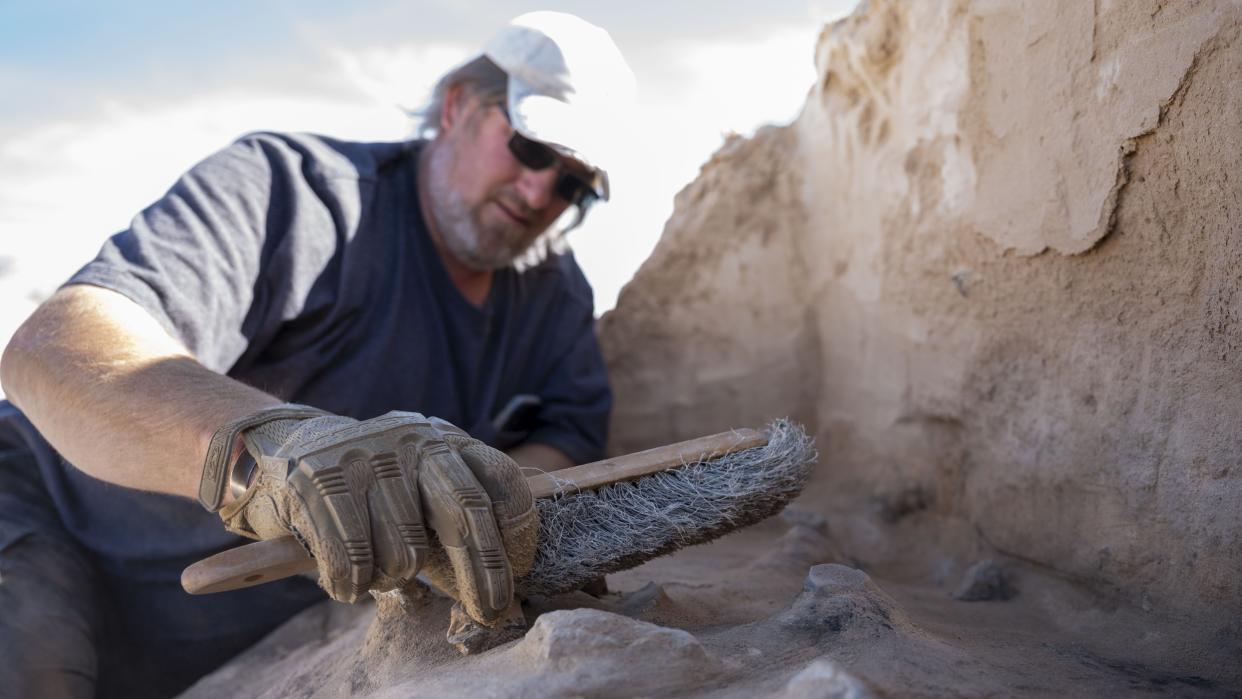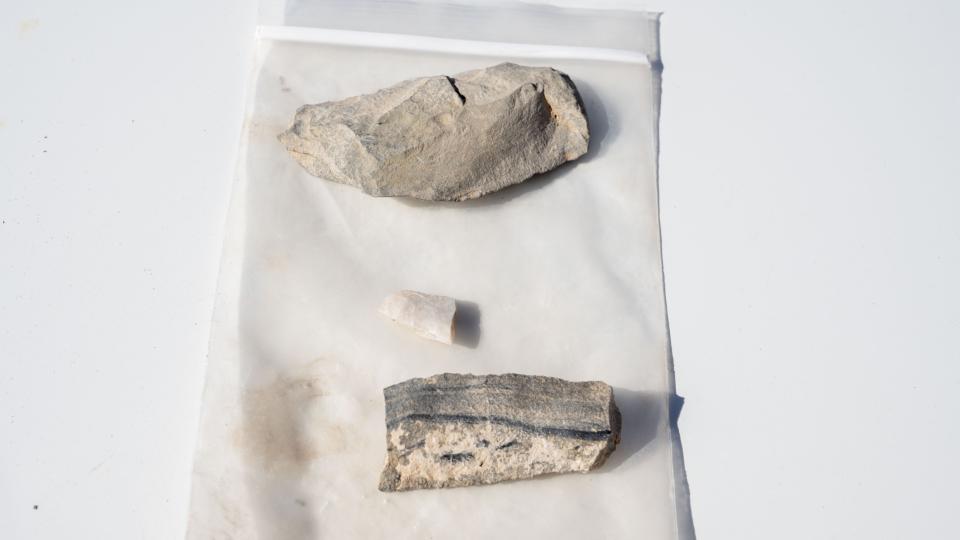8,200-year-old campsite of 'Paleo-Archaic' peoples discovered on US Air Force base in New Mexico

Military personnel recently unearthed the remains of a prehistoric campsite on an air base in New Mexico, which early Americans may have occupied 8,200 years ago.
Members of the 49th Civil Engineer Squadron (CES) made the discovery together with a team of geologists near a road cut on Holloman Air Force Base, 160 miles (260 kilometers) southeast of Albuquerque. The base is adjacent to White Sands National Park, which is known for its ivory-colored gypsum sand dunes and for preserving the oldest known human footprints in North America, made up to 23,000 years ago.
The White Sand National Park's dunes formed at least 1,000 years after the air base's archaeological site and may have helped preserve the prehistoric artifacts there. "The formation of the white sand dunes inadvertently buried the site, with windblown silt protecting the delicate archaeological remains," Matthew Cuba, the cultural resource manager of the 49th CES who participated in the excavations, said in a statement.
Excavations of the site, named Gomolak Overlook, yielded various artifacts that indicate the site may have been a seasonal encampment for early "Paleo-Archaic" peoples in what is now New Mexico. Archaic peoples were descendants of the first humans who set foot in the Americas and one of the early cultures in the New World to grow and domesticate plants, according to the U.S. National Park Service.
"This site marks a pivotal moment in shedding light on the area's history and its early inhabitants," Cuba said.
Related: 13 of the oldest archaeological sites in the Americas
Among the remains, which were hidden several feet below the ground, Cuba and his colleagues found evidence that early settlers lit fires and burned mesquite — a type of spiny shrub in the pea family (Fabaceae) that is native to semi-arid regions in the Southwest U.S. and Mexico.

"Found on the site were approximately 70 items, ranging from flake stones to a rare example of an early ground stone, providing valuable clues about past human activities," Cuba said. "We also uncovered a series of hearths, or community campsites, with remnants of mesquite charcoal which is a tremendous find in and of itself."
RELATED STORIES
—How did humans first reach the Americas?
—37,000-year-old mammoth butchering site may be oldest evidence of humans in North America
—What's the earliest evidence of humans in the Americas?
The campsite is one of 400 archaeological discoveries made within the boundaries of Holloman Air Force Base, according to the statement.
The wider Tularosa Basin region, which stretches across 6,500 square miles (16,800 square kilometers) of southwestern New Mexico, is home to some of the oldest archaeological sites in the Americas. Excavations over the past 10 years have uncovered the 11,000-year-old fossilized footprints of humans tracking a giant sloth, 10,000-year-old footprints belonging to a woman and a toddler, as well as evidence that Ice Age children frolicked in muddy puddles.

